The Must-Visit WWII Sites of Budapest
Hey there! This post may contain affiliate links, which means I’ll receive a commission if you purchase through my link, at no extra cost to you. Please see my legal page for more details.
This post explores the Shoes on the Danube Promenade and the Dohány Street Synagogue, and the other must-visit WWII sites of Budapest. This is a self-guided walking tour of Budapest’s WWII sites.
Map of the Must-Visit WWII Sites
What are the Shoes on the Danube?
Sometimes simplicity makes for the most powerful memorials, and that is true of the Shoes on the Danube Promenade. I returned here multiple times when visiting Budapest. It is a beautiful and somber place to rest and reflect.
Quietly situated on the banks of the Danube River on the Pest side of Budapest are sixty pairs of shoes made from iron. There are men’s shoes made for walking, women’s pumps made for dancing, children’s shoes made for growing out of – all of the styles worn in the 1940s.
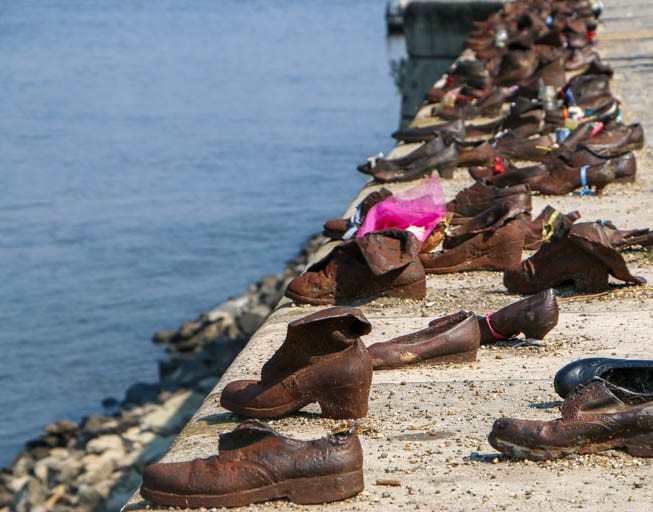
The view across the river to the Buda Castle is the last view that many Jews of Budapest would see. The Hungarian Arrow Cross Party would round people up from the nearby Jewish ghetto, line them up along the banks of the Danube River and shoot them in the back.
Why are the Shoes on the Danube one of the Must-Visit WWII Sites of Budapest?
Any visit to Budapest will involve a walk along the Danube, which flows between Buda and Pest. Like the Chain Bridge that unites the once separate cities, the memorial unites past and present and reminds us all that it’s our duty to remember what happened here so that history may never repeat itself.
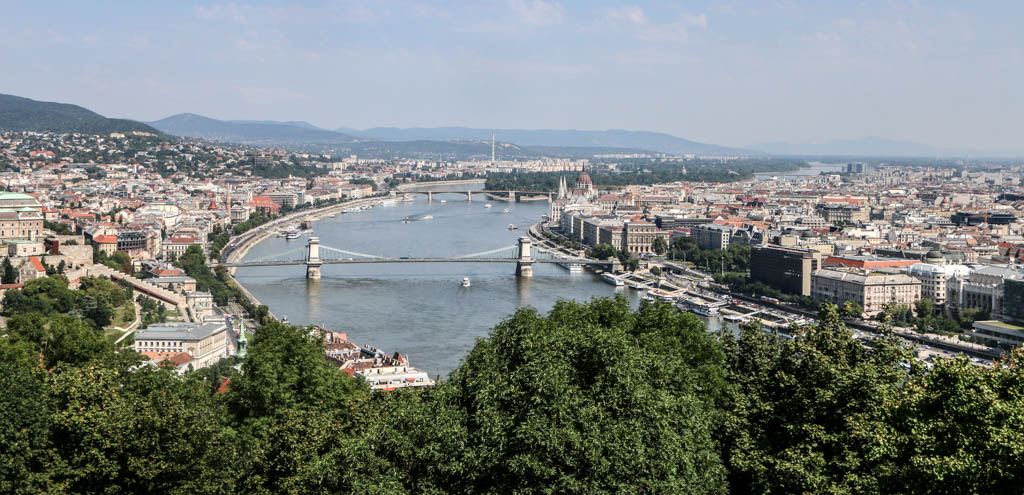
During the coldest months of 1944-45, the Danube was called the “Jewish cemetery,” a nickname as chilling as the winter water.
Conceived by film director Can Togay and brought to fruition by sculptor Gyula Pauer, the memorial is as simple as it is powerful.
Symbolizing the ironclad fact that nobody was safe, the iron soles of the Shoes on the Danube Memorial vary from fancy heels to torn and worn leathers to barely-there children’s slippers. No matter their background, the owners of those shoes met the same fate during WWII in Budapest.
Forced to strip, they stepped out of their shoes and left them on the left bank of the Danube before turning away from their murderers and toward the icy waters.
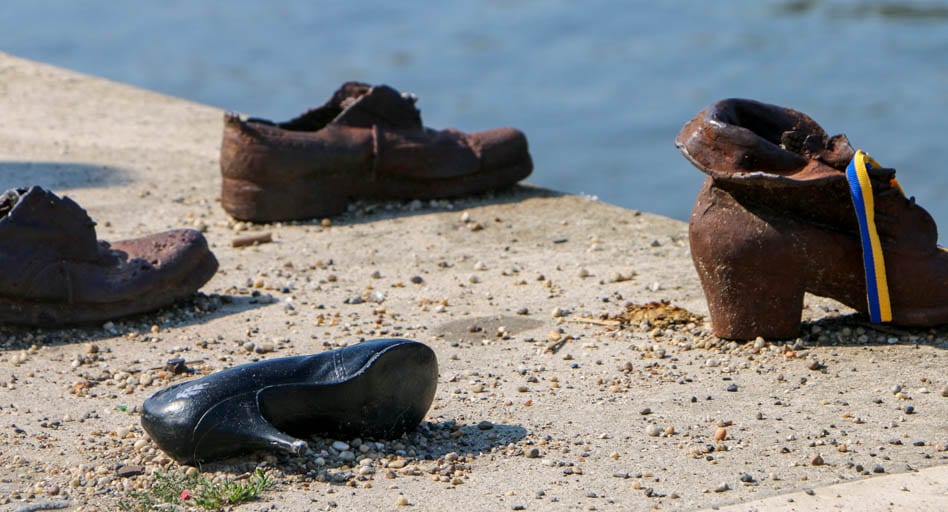
I think of the iron soles on the riverbank as the souls of those who died here reminding us that while atrocities may be committed by a few, they are facilitated by the silence of the multitude.
Plaques behind the heels of the shoes remind visitors that the mass murder committed in Hungary was not at the hands of the Nazi occupiers, but at the hands of the Hungarian Army Cross Militia.
There is power in the simplicity of the message of the Shoes on the Danube Memorial, and there is also power in the largescale remembrance just down the street at the Dohány Street Synagogue.
Where to stay near the Shoes on the Danube
There are many places to stay near the memorial or just across the Danube River on the Buda side. I stayed on the Buda side and took the easy walk across the bridge every day to the Shoes on the Danube.
Where is this must-visit WWII site of Budapest?
The shoes are located on the Pest side of the Danube River just a five-minute walk south of the Hungarian Parliament.
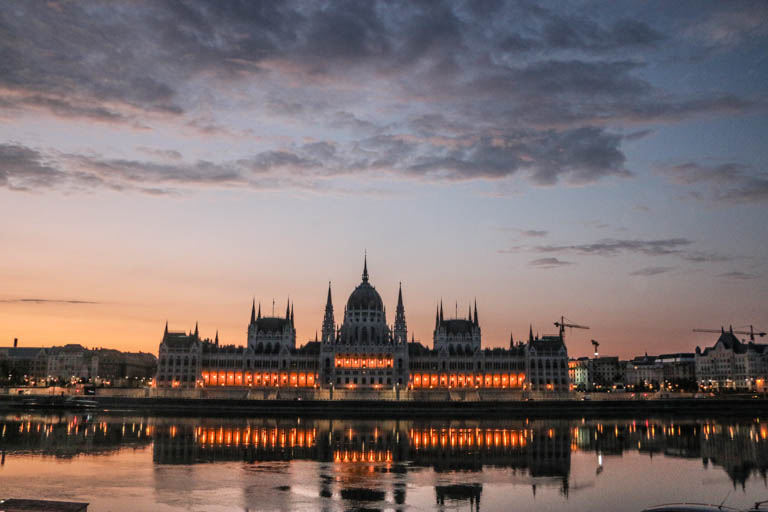
How much does it cost to visit the Shoes on the Danube Memorial?
There is no cost to visit the memorial.
When should you visit the Shoes on the Danube?
The memorial can be visited at any time of day, but the views at sunset over the Danube with the Buda Castle sparkling across the river are magical. Sunset is always a reflective time for me and there are few better places for reflection than this Budapest memorial.
What should you expect when visiting this must-see WWII site in Budapest?
It’s a quiet place to visit. People stand or sit on nearby benches and gaze across the iron shoes toward Pest. Sometimes people leave small trinkets or flowers in the shoes or near the memorial.
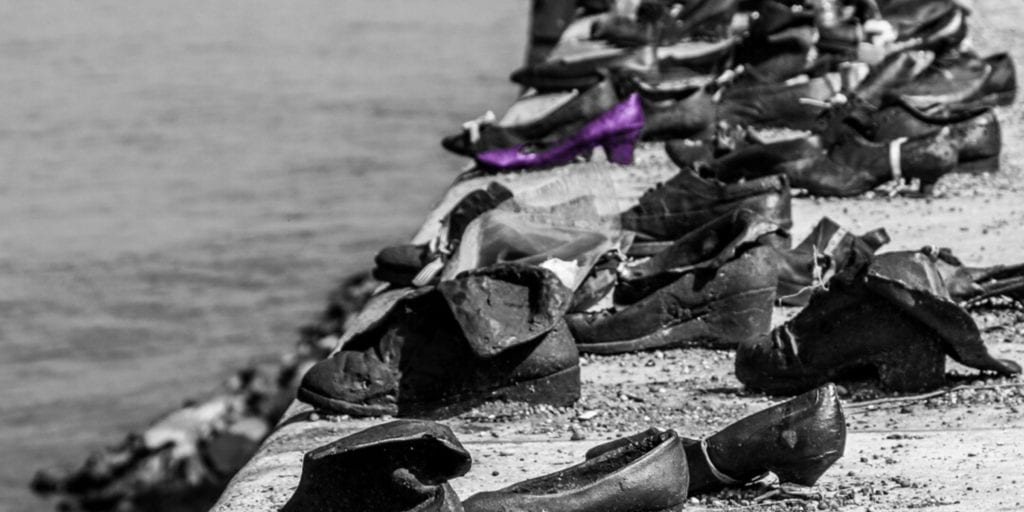
Moving on to our next of our must-visit WWII sites of Budapest, we’re going just down the street to the Dohány Street Synagogue and the remains of the Budapest Ghetto.
What is the Dohány Street Synagogue?
Also known as the Great Synagogue, the Dohány Street Synagogue is the largest in Europe and the second-largest in the world.
The Dohány Street Synagogue is also the center of the Jewish Quarter in Budapest. The towering Moorish synagogue seats 3,000 people and has an important place in the history of Budapest – including a tragic place in the WWII history of the city.
Why is the Dohány Street Synagogue one of the Must-Visit WWII Sites of Budapest?
Dohány Street was one of the borders of the Budapest ghetto where 70,000 people were crammed into a far-too-small space during the horrific Hungarian winter of 1944-45. The particularly cold winter in combination with the particularly cruel tactics of Ferenc Szalasi and his Arrow Cross Militiamen led to thousands of deaths in the ghetto where bodies lined the streets.
After the ghetto was liberated by the Soviets on Jan 17, 1945, three mass graves were created around Budapest, including one grave on the grounds of the synagogue. The cemetery in the synagogue garden is a rare site because Jewish tradition separates places of burial from houses of prayer.
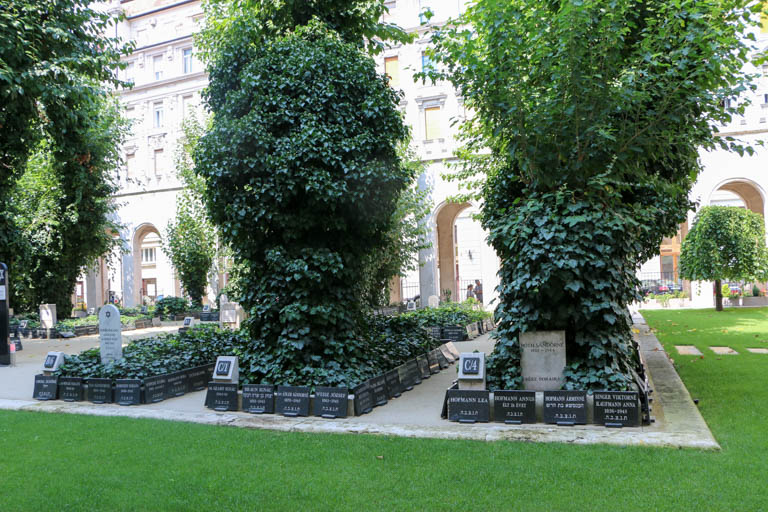
A narrow walkway next to the cemetery and garden leads you to the Raoul Wallenberg Holocaust Memorial Park behind the synagogue. Here a weeping willow tree represents the Memorial of the Hungarian Jewish Martyrs or the Tree of Life.
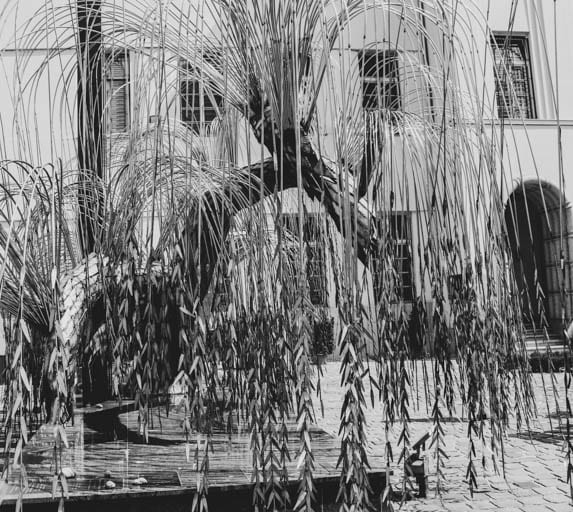
The branches are heavy with leaves inscribed with the names of some of the hundreds of thousands of Hungarian victims murdered during the Holocaust.
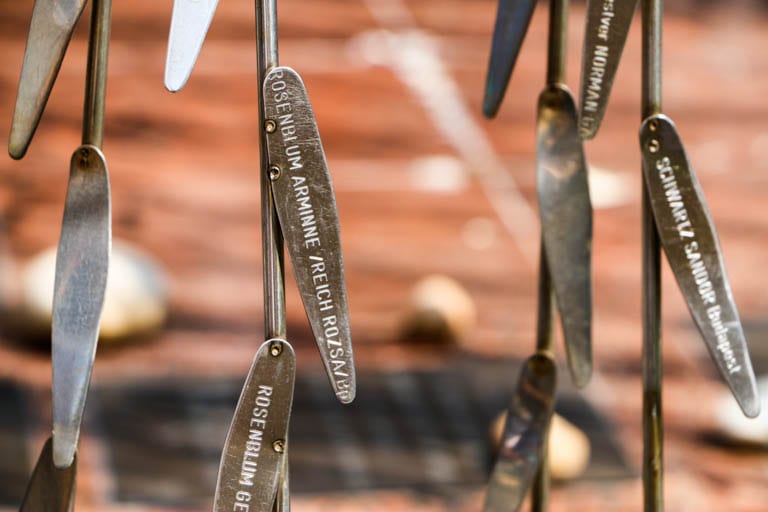
On the synagogue complex, and included with the price of admission, is the Jewish Hungarian Museum. Here a collection of artifacts symbolizing the everyday life of Hungarian Jews is on display. The collection was saved from destruction in WWII by two employees of the Hungarian National Museum who hid the artifacts in the cellar.
The exhibit also includes individual stories of Hungarian life during WWII. The stories are amplified by the view from the windows which overlook a piece of the original ghetto walls and the mass grave of those who perished in there.
Where is this must-visit WWII site of Budapest?
The largest synagogue in Europe is a 20-minute walk from the Shoes on the Danube on the Pest side of the river and in the Jewish Quarter on Dohány Street. Address: Budapest, Dohány u. 2, 1074 Hungary
Where to stay near the Dohány Street Synagogue
Now you’re on the Pest side of the river. Here are available accommodations near this must-see WWII site of Budapest:
How much does it cost to visit the Dohány Street Synagogue?
Admittance with a two-hour group tour costs 27 euros and covers the major sites. There will be a line that moves quite quickly (fast-track advance tickets are available online) and you are organized into groups based on your spoken language.
Pro tip: Make sure to ask about closing times before purchasing.
Also, check out this private tour from Viator that includes a walk of major Jewish sites in Budapest, including the synagogue. I think this is the way to go since the synagogue can be a bit of a hassle with all the crowds.

When should you visit the Dohány Street Synagogue?
The synagogue opens to the public at 10:00 every day except Saturdays and religious holidays. Closing hours Sunday-Friday vary depending on the season. The synagogue is always closed on Saturday.
The ticket office stops selling 30 minutes before closing time.
It’s best to visit in the morning to avoid crowds.
What is the dress code of the Dohány Street Synagogue?
STRICT!
Men are provided with a head covering upon entering the synagogue. It is recommended to cover shoulders and wear knee-length clothing.
I wore a long dress with short sleeves that covered my shoulders but was chased by a disapproving man who thrust a paper shawl at me because my sleeves were too sheer.
It’s the same dress that I’ve worn to the many churches that I’ve visited in my travels and this is the only time that I’ve had any trouble, so err on the side of covering up at Dohány Street Synagogue.
What should you expect when visiting the Great Synagogue?
The crowds during high season are a little overwhelming, but the system for moving groups through the synagogue is well organized. Once inside the museum or the gardens, the visit becomes quiet and reflective.
The tours are comprehensive and you will learn about the full history of the synagogue, not just the significant place that the synagogue held as a border of the ghetto during WWII in Budapest.
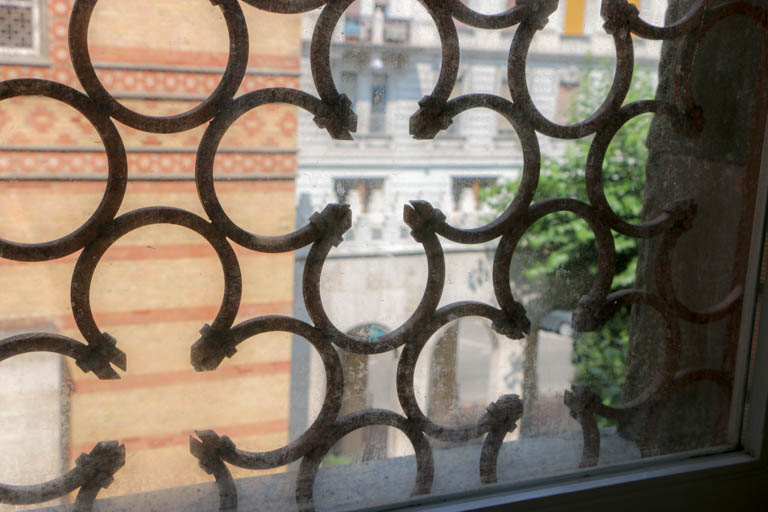
Why should you visit the Dohány Street Synagogue?
The synagogue is beautiful and ornate, decorative in a way that is unusual for synagogues. Its historic place as the border of the Budapest ghetto makes it tragic as well. It’s our duty to remember what happened here.
What is the Hospital in the Rock Nuclear Bunker Museum?
Beneath the Buda Castle, there is a labyrinthine of limestone caves that, during WWII, hid a full-blown hospital underground. The Hospital in the Rock Nuclear Bunker takes you right back to a time when war was inescapable.
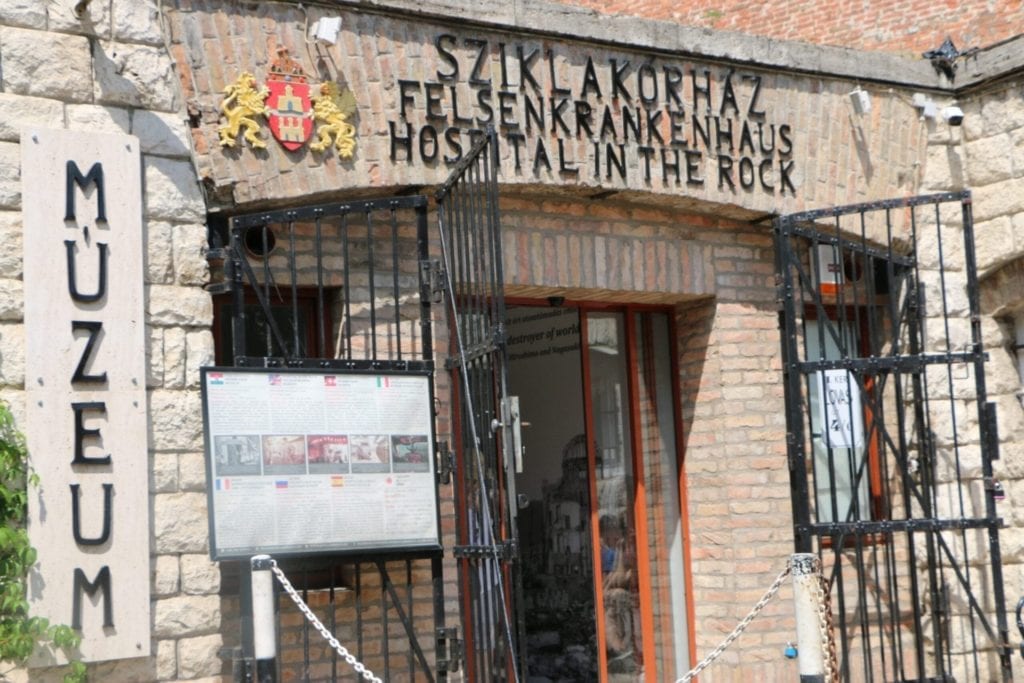
There are recreated scenes throughout the hospital beneath the rock of Budapest during WWII. It is really cool, really eerie, and really worth seeing!
- Pro Tips: Bring a jacket. It is COLD in there even in the hottest months. (The folks at Hospital in the Rock do provide blankets if you forget.)
- There are no photos allowed in the Hospital in the Rock, so you’ll have to use your imagination and, when you go, your memory!
Why is the Hospital in the Rock one of the must-visit WWII Sites of Budapest?
The Hospital in the Rock takes you back to WWII in Budapest when war was inescapable, yes, but the museum also serves as a distinct reminder that war is an inescapable threat at all times.
It was during the Cold War that the cave was converted into a secret nuclear bunker, after all.
The museum and bunker provide an interesting overview of Budapest’s position in WWII and of the siege of Budapest that took place on Christmas of 1944 when the Soviet armies surrounded the city, forcing the civilians into bunkers until February when Buda fell to the allied forces.

The museum now hosts an exhibition about the aftermath of the nuclear bombs that the United States detonated over Hiroshima and Nagasaki, bringing a bloody end to a bloody world war.
It is this exhibition that touched me the most because of the paper cranes hanging from the bunker ceiling. They reminded me of the cranes my late partner’s friends and families made for him when he was dying of cancer.
RELATED POST
(You can see more of the walking tour of Budapest that I took in honor of my late partner here.)
Where to stay near the Hospital in the Rock
We’re back over the river on the Buda side now. I really liked staying on the Buda side.
Where is this must-visit WWII site of Budapest?
Every one of these Must-See WWII sites of Budapest is close to one another. The Hospital in the Rock is beneath the castle and a little more up in the hills on the Buda side of the Danube.
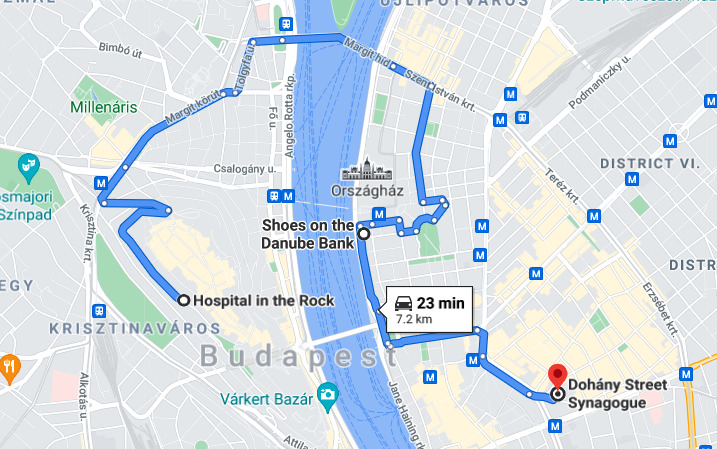
How much does it cost to visit the Hospital in the Rock?
Every ticket includes a guided group tour for 13 euros for adults.
When should you visit the Hospital in the Rock?
Guided tours are available on weekdays from 12-6 pm, on Saturdays from 10-7, and on Sundays from 10-6. The tours are capped at a certain amount, so there is never a mob of people. You can go any time, but keep in mind that the Hospital in the Rock has limited hours in the morning time!
What should you expect when visiting this WWII site of Budapest?
You should expect a fascinating and moving group tour. You should also expect to be cold. You’re underground, remember. Bring a sweater!
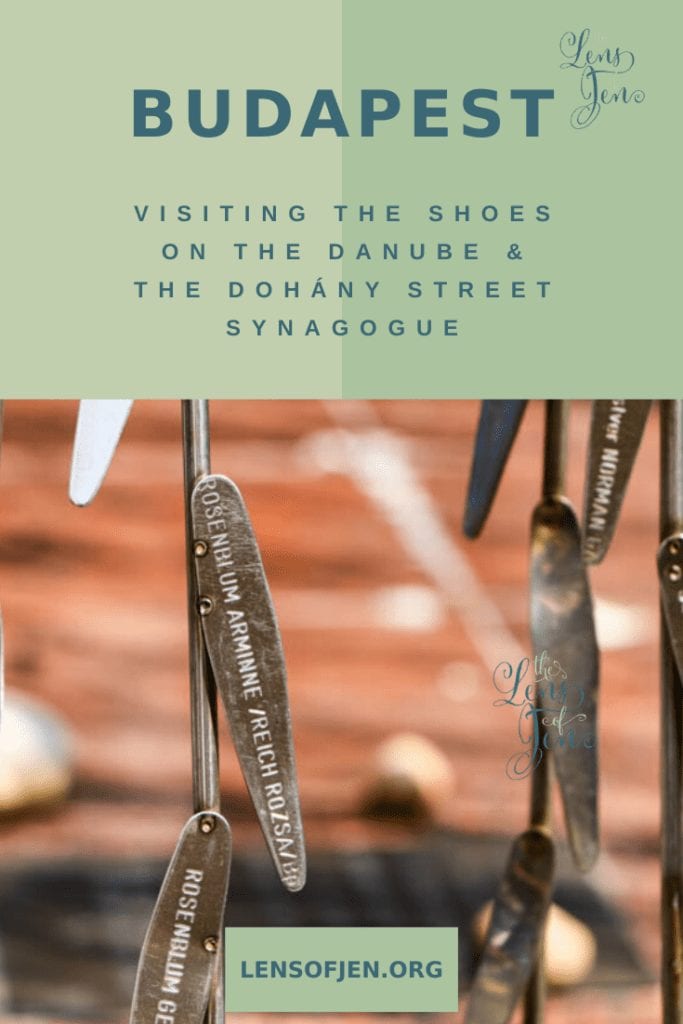
Never Forget Series
Thank you for reading this post about the must-visit WWII sites of Budapest. Please check out the other posts in my never forget series to help us ensure we do not repeat this horrible part of our history.
For more on WWII, see my curated list of best WWII non-fiction books here. This list is on Bookshop, an online bookstore that supports independent booksellers.
about the author
Hi! I’m Jen. I’m a freelance writer and travel blogger who quit my nine-to-five after my fiancé, Jeff, died of cancer at the age of 40. When he died, I realized that life is just too short to delay our dreams. Since my dream was to travel and write, I now travel and write full-time. Today I wear hiking boots instead of heels and collect experiences instead of things.

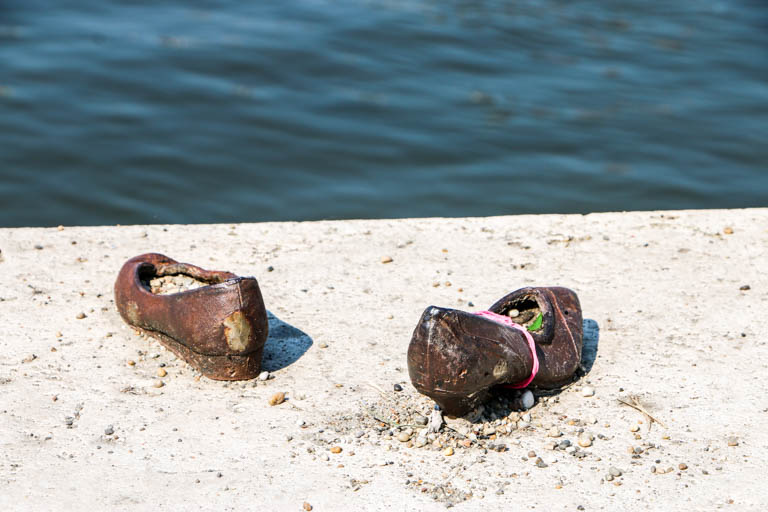





Great tour with lots of information. Only complaint would be to many people in our group. Guide was talking and many times was still in other room with so many people. Missed out on some information being presented. Stay up front with the guide……
That’s a great tip!
The shoes are such a powerful and poignant monument and conveyed in such a simple yet heartbreaking and effective way. Would love to see these WWII sites in Budapest.
The shoes are so powerful and so simple. I just sat with them for hours.
I visited both places in Budapest. Tragic stories. I was surprised at the security in the synagogue- I’ve never seen anything so elaborate at a place of worship.
The security was wildly intense. When they turned me back for my capped sleeves on a seriously proper dress (the one I wear to church in the states!), I was pretty surprised.
As someone with a deep interest in holocaust history and WW2, I’d love to see this and to explore Budapest. 1944 was such a bad year in Hungary and its Jews. I know, that’s a total understatement. Fascinating post – especially about the mass grave and the memorial tree.
Thank you for reading. I know it’s a hard subject to choose to read about or travel toward.
Its posts like this why I love reading blogs. Finding and learning history as distressing as it was.
Never been to Budapest nor Hungary its certainly on be list however
I agree! That Travel Blog Tuesday community has taught me so much both about new destinations and about how to organize my blog. Thanks for visiting!
Wow. I wasn’t aware of this side of history in Budapest. These acts are disturbing but must be addressed so we will never forget. Jen, you did an excellent job writing about such a sensitive piece of humanity.
Thank you so much for reading this. I know it’s hard to read.
I only visited Budapest on a day trip so I only scratched the surface. I will add these places to my itinerary if I ever make it back. Especially the Shoes sound thought-provoking.
Thank you for reading, Carina! I can’t wait to read about your experiences when you do make it back!
These are definitely must visit WWII sites in Budapest. I’ve been to both and each are a learning experience in its own right. One more I’d add to the list is the Hospital in the Rock Nuclear Bunker Museum. It was an emergency hospital and bomb shelter hurriedly built in 1939. Really cool and interesting museum!
I absolutely love the Hospital in the Rock. There are paper cranes hanging from the ceiling there, a symbol of life and cancer, and that really spoke to me since I visited after my partner died of cancer. I have a corresponding post to this one that details following in Jeff’s footsteps and he definitely went to the hospital!